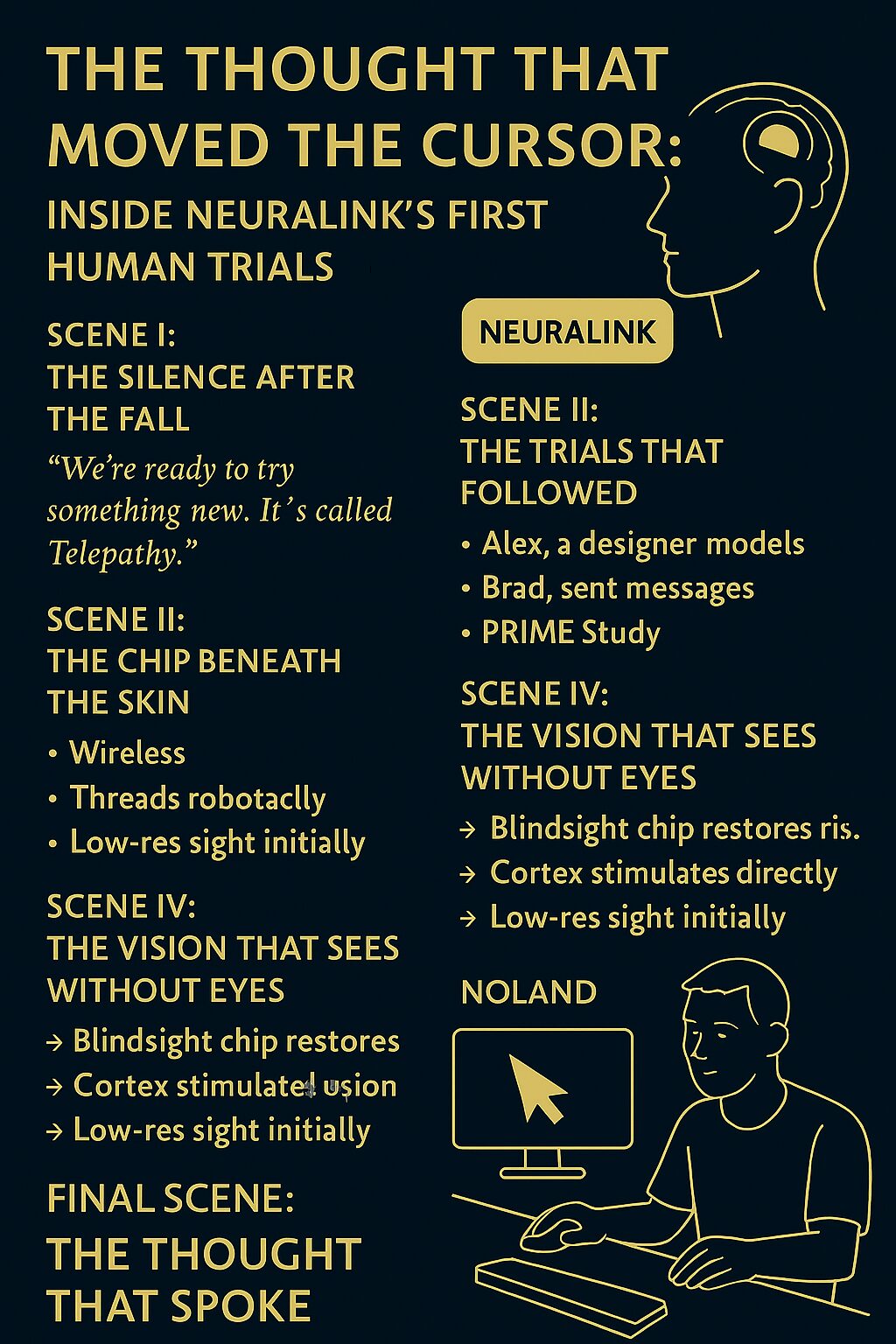Introduction
In 2025, Neuralink, Elon Musk’s brain-computer interface company, has officially launched its first human trials of AI-powered brain implants. These groundbreaking procedures mark a historic moment in neurotechnology, offering new hope for individuals with paralysis, blindness, and neurodegenerative disorders.
This article explores Neuralink’s latest advancements, the science behind its implants, and what the future holds for AI-integrated human cognition.
🧠 What Is Neuralink’s Brain Implant Technology?
Neuralink’s implant—known as the N1 chip—is a fully wireless brain-computer interface (BCI) designed to decode brain signals and transmit them to external devices.
Key Features
- Cosmetically invisible once implanted
- Uses ultra-thin threads to record neural activity
- Transmits data wirelessly to a companion app
- Enables control of computers, robotic arms, and digital devices using thought alone
The implant is placed using Neuralink’s R1 surgical robot, which inserts threads into the motor cortex with micron-level precision.
🧪 The PRIME Study: Neuralink’s First Human Trials
Neuralink’s clinical trial, called the PRIME Study (Precise Robotically Implanted Brain-Computer Interface), began in early 2024 and continues into 2025.
Trial Goals
- Evaluate safety and functionality of the N1 implant
- Enable participants with quadriplegia or ALS to control devices with their thoughts
- Test long-term usability and independence in real-world settings
Participants include individuals like Noland Arbaugh, who regained digital autonomy after a diving accident left him paralyzed.
👁️ Blindsight Chip: Restoring Vision with AI
In 2025, Neuralink also began testing its Blindsight chip, designed to restore vision for individuals who have lost their eyes or optic nerves.
How It Works
- Stimulates the visual cortex directly
- Bypasses damaged eyes or optic nerves
- Offers low-resolution vision initially (likened to “Atari graphics”)
- May eventually allow perception of infrared and ultraviolet light
This chip could revolutionize treatment for congenital blindness and severe ocular trauma.
📊 Real-World Impact and Use Cases
| Condition | Neuralink Benefit |
|---|---|
| Paralysis | Control devices via thought (e.g., cursor, keyboard) |
| ALS | Restore communication and digital access |
| Blindness | Visual cortex stimulation for sight restoration |
| Neurodegeneration | Potential future applications in memory and cognition |
Participants have used the implant to play video games, design graphics, and even control robotic arms.
⚠️ Challenges and Ethical Considerations
Despite its promise, Neuralink faces scrutiny:
- Medical complications: One participant experienced thread retraction, which was resolved with algorithm updates
- Animal testing concerns: Ongoing investigations into ethical treatment during preclinical trials
- Privacy risks: Brain data security remains a critical issue
- Surgical accessibility: Limited to specialized centers with neurosurgical expertise
Neuralink emphasizes its commitment to safety, transparency, and patient autonomy.
📈 SEO Tips for Neuralink Content Creators
✅ Search-Friendly Titles
- “Neuralink 2025: First Human Brain Implant Trials Explained”
- “AI Brain Chips by Neuralink: What You Need to Know”
✅ High-Impact Keywords
- “Neuralink human trials 2025”
- “AI brain implant technology”
- “Blindsight chip Neuralink vision restoration”
✅ Metadata Optimization
- Alt Text: “Neuralink brain implant enabling thought-controlled devices in human trials”
- Tags: #Neuralink2025 #AIBrainImplants #BlindsightChip #BCITechnology #ElonMuskNeurotech
Final Thoughts
Neuralink’s 2025 human trials represent a paradigm shift in how we interact with technology. From restoring movement to enabling sight, AI brain implants are no longer science fiction—they’re a reality.
💬 Want help crafting content around Neuralink’s innovations or exploring ethical implications of brain-computer interfaces? I’d be thrilled to assist—neuron by neuron.

